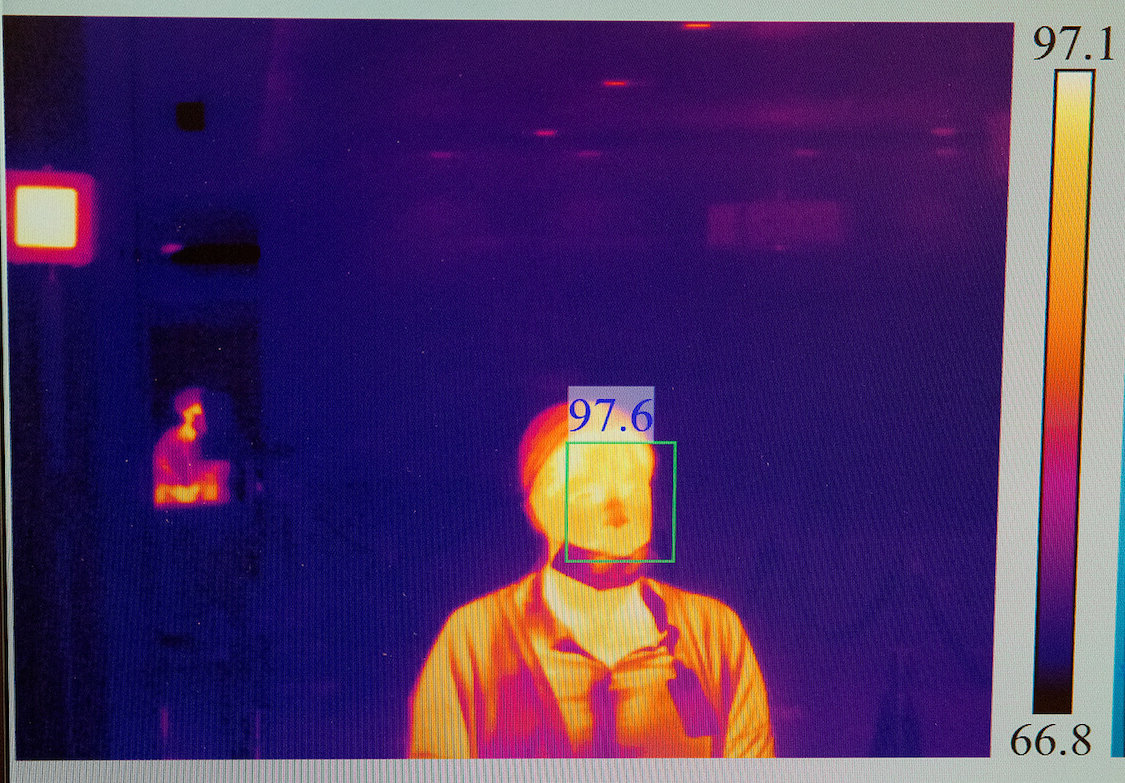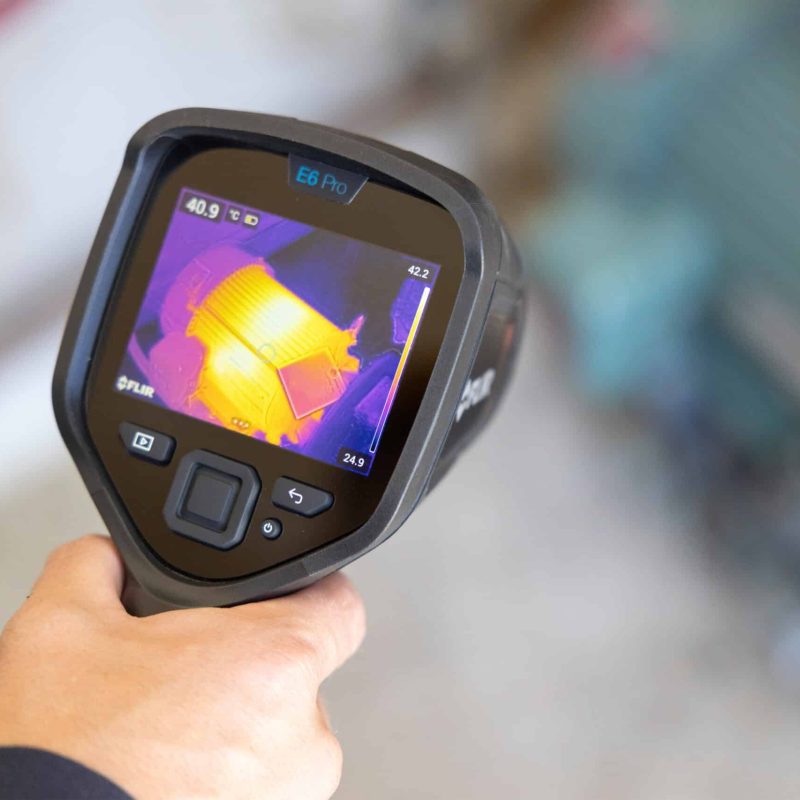What Are Thermal Scanners? An Essential Guide to Understanding Its Importance
Introduction
In our technologically-advanced world, thermal scanners have become quite indispensable in a variety of industries, ranging from healthcare to emergency services, and even wildlife observation. This guide aims to elucidate what thermal scanners are, how they function, the different types available, where they are commonly used, and future prospects for this technology. It will shed light on its importance and applications in different sectors, making it easier to understand why this technology is so essential in various industries.
What are Thermal Scanners?
Thermal scanners, often referred to as infrared thermometers or thermal imaging cameras, are powerful devices that play an essential role in several industries. They primarily function by detecting and measuring thermal radiation emanating from bodies or objects. The non-contact aspect of these scanners sets them apart, making them extremely useful in situations where physical contact is either not possible or undesirable.
To elaborate on the specifics:
- Composition: Thermal Scanners are comprised of a lens that captures the infrared light emitted by all objects in view.

- Functionality: These devices focus the infrared light onto an array of infrared detector elements, which in turn create a detailed thermal pattern.
- Processing: This development is called a thermogram which, after being processed by circuit elements, forms a detailed temperature map of the scene.
- Imaging: An important part of this technology is the creation of thermal images, which involves the conversion of thermograms into usable data for evaluation.
- Usage: The primary attraction of thermal scanners is their ability to function without requiring physical contact, thereby proving useful in many no-contact-required situations such as detecting fever or identifying mechanical issues.
In essence, thermal scanners are versatile devices that have considerable applications in today's technology-driven world, and their role is only set to amplify in the coming times.
How Do Thermal Scanners Work: The Technology behind It
If you are wondering about the functioning of thermal scanners, it's time to delve deep into its technology. The exciting science behind their operation is nothing less than magical, and it rests on principles of thermography - a method that can detect and quantify the thermal energy emitted by objects.
Here's a simplified step-by-step dissection of the process:
1. Detection of Infrared Radiation: The first step in the scanning process involves the detection of invisible infrared radiation from the objects. Every object, due to its temperature, naturally emits this type of radiation.
2. Conversion of Radiation Into Image: The detected infrared radiation is then converted into a thermal image. This is done by the critical component of the thermal scanner - the infrared detector array, responsible for transforming infrared energy into an electronic signal.
3. Processing Data for Viewable Output: The electronic signal is then processed to produce an understandable and recognizable image. This is known as a thermal image or thermogram, a visible depiction of temperature variations.
4. Colour Coding Temperature Fluctuations: Different colors or shades on the thermal image indicate the different temperature ranges of the object or body being scanned. These colours are pre-set in the device, and they help rapidly identify areas of different temperatures within the scanned object or area.
The process occurs at lightning speed to provide instant results. The seamless and quick operation gives thermal scanners an edge, making them a powerful tool across various industries and sectors.
In essence, it is the technology of thermal scanners that has made it possible to measure temperatures from a safe distance, paving the way for their extensive use in today's world. Whether it's to screen a human body temperature during a pandemic or to spot overheating machinery parts, thermal scanning technology has made the process fast and efficient, revolutionizing the way temperatures were traditionally measured.
Focusing on Different Types of Thermal Scanners Available
There is a broad spectrum of thermal scanners obtainable in the market today. However, the core classification of these innovative devices typically falls into two main categories:
1. Active Thermal Scanners: These types of scanners project infrared light onto the object or space in question and then measure the reflected radiation to gauge temperature. They’re essentially interactive, hence termed 'active.'
2. Passive Thermal Scanners: Contrary to active scanners, these devices record the natural infrared radiation that emits from an object without projecting any light onto it. As they don't interact with the objects, they're deemed 'passive.'
Beyond this primary classification, thermal scanners vary based on a range of factors, offering custom solutions for different needs:
- Handheld Thermal Cameras: These portable devices allow professionals to move around and scan areas or objects from various angles. They're user-friendly and practical for a wide array of applications.
- Large-area Thermal Scanning Systems: These systems are typically used for scanning large or expansive surfaces such as factories or landscapes. They offer comprehensive, detailed thermal images that are instrumental in sectors like industrial maintenance or geographical research.
- Personal Thermal Imaging Goggles: For personal use, thermal imaging goggles come into play. They offer users the ability to perceive the world in a new light, literally, by visualizing the thermal environment around them.
Each type of thermal scanner has its unique benefits, making them well-suited for varied applications, depending upon the user's needs, thus ensuring this technology's extensive and universal usefulness.
Real-World Applications: Where are Thermal Scanners Typically Used?
Thermal scanners' rich and varied applications span across an array of distinct industries and sectors. Characterized by their utility and precision, these devices have maneuvered their way into the core operations of many different fields. Let’s take a detailed look at where these instruments are conventionally employed:
1. Healthcare: The healthcare industry employs thermal scanners as a rapid diagnostic tool for potential diseases. They are implemented to conduct body temperature screenings to detect fever, inflammation, or other heat-based ailments. In the wake of COVID-19, these devices have been pivotal in identifying individuals with high temperatures in public spaces as a preventative measure against virus spread.
2. Fire and Rescue Services: Thermal scanners serve as the eyes of firefighters and rescue teams in smoke-engulfed, low-visibility scenarios. They aid in pinpointing the location of trapped individuals, becoming a life-saving tool in such emergency situations.
3. Industrial Maintenance: Industrial setups use thermal scanners to preemptively identify potential issues in machinery and electrical equipment. How? By accurately detecting overheating or malfunctioning parts, consequently preventing any expensive equipment failure.
4. Wildlife Studies: These devices have immense utility in wildlife research as well. They facilitate monitoring animal activities in low-light or nighttime conditions, contributing to our understanding of animal behavior and aiding in wildlife conservation efforts.
Whether it's in medical diagnostics, industrial fault detection, or wildlife research, thermal scanners have proved to be invaluable in countless applications. With their effortless adaptability and functional versatility, their influence is poised to only grow in the coming years.
Future Predictions: What's Next for Thermal Scanners?
As we propel forward into the digital age, thermal scanners will continue to play prominent roles, and, alongside emerging technologies, their utility is poised to evolve. The future of thermal scanners certainly appears to be bright, with scope for enhancements, innumerable possibilities, and broader applications across a myriad of sectors.
Below, we explore some potential future developments in thermal scanner technology:
- Advances in Sensor Technology: The future may witness considerable improvements in sensor technology. This could lead to the development of more efficient thermal scanners that offer greater accuracy and quicker thermal imaging.
- Healthcare Applications: Thermal scanners may soon allow healthcare professionals to detect diseases at earlier stages by identifying thermal anomalies as symptoms. This can potentially revolutionize the detection and monitoring of diseases, profoundly impacting our healthcare approach.
- Integration with IoT: In the industrial sector, thermal scanners, when coupled with Internet of Things (IoT), could automate defect detection processes, thereby bolstering preventive maintenance efforts. This could significantly prevent potential equipment failure and increase overall productivity.
- Personal Security and Home Automation: Imagine a world where your thermal cameras can detect unusual activity or people in your property, boosting your home security. Furthermore, thermal scanners could integrate with home automation systems to control temperature-sensitive aspects effectively.
- Autonomous Vehicles: The transport sector may see an increase in the use of thermal scanners in autonomous vehicles. They could help these vehicles detect living beings and objects with better accuracy, especially under low-visibility conditions, thus improving safety on the roads.

In conclusion, with these promising advancements on the horizon, thermal scanners are expected to permeate further into our daily lives, becoming an irreplaceable part of various industries.
Conclusion
In conclusion, thermal scanners are valuable tools with diverse applications in various sectors. Their potential goes beyond what we see today, with future advancements expected to amplify their use even further. Whether it’s for health, industrial, or personal purposes, the importance and use of thermal scanners are undeniable.
Related FAQs about what are thermal scanners
How accurate are thermal scanners in detecting temperature?
Thermal scanners are highly accurate within a specific range, often able to detect temperature variances as small as 0.1°C. However, accuracy depends on the proper calibration of the device, environmental conditions, and correct usage methods. Therefore, professional, high-end thermal scanners with proper calibration and usage tend to yield highly accurate results.
Is a thermal scanner harmful to human health?
No, thermal scanners are not harmful to human health. They merely detect and measure the infrared radiation (heat) emitted by the human body or an object. They do not emit any hazardous radiation themselves, making them perfectly safe for use in health screenings or body temperature checks.
What industries can benefit the most from thermal scanners?
Thermal scanners have a wide array of applications. Healthcare, emergency services, industrial settings, research, and wildlife observation are some of the top beneficiaries. They are used for detecting fever in healthcare, identifying hotspots in firefighting, spotting machinery issues in industries, and tracking animal activities in wildlife studies.


